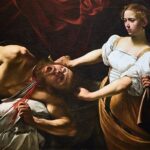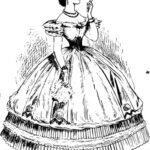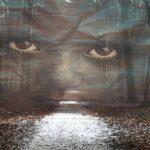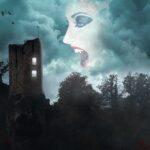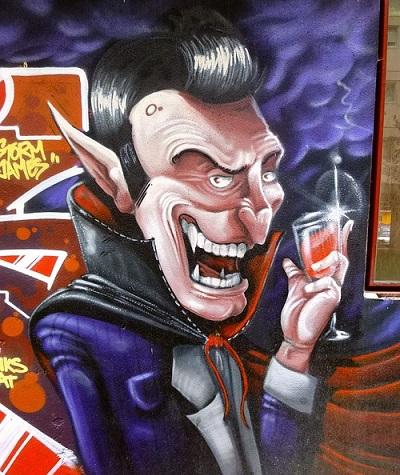
In Bram Stoker’s Dracula, the unmistakable villain is Count Dracula, a powerful vampire from Transylvania who endeavors to pervade Victorian London and execute his malignant incursion into England. Whereas today Dracula is primarily perceived as a memorable Gothic narrative that established the vampire subgenre, the novel actually expresses deep late 19th century’s fears and anxieties of many British citizens about non-British immigrants who streamed into England in big numbers during this period, principally from the East.
In fact, the novel does not only convey these presentiments but also figuratively forewarns that this wave of foreign immigrants might result in a pernicious takeover against Great Britain through “captivation” of English women by non-British immigrants; Stoker suggests that, in turn, this could lead to deletion and replacement of the logical and moral British identity with the savage and depraved Eastern identity.
This essay will accordingly discuss the underlying xenophobic tones in Dracula, and show how Stoker imparts the sentiments of dread of non-British assimilation within British society through interracial coupling. More specifically, the essay will first briefly review the immigration fluctuation to England during the late 19th century, and will then subsequently examine Count Dracula’s stereotypical characteristics as a foreign immigrant, his targeted ensnarement of English women, and ultimately the potential cataclysmic aftermath of such a ploy which could ruin Western civilization as it is presented in Dracula.
During the 19th century, there were several different waves of immigrants flocking into Britain – mostly to London – from Eastern Europe, Asia, and Africa. Throughout the 19th century, Jewish immigrants from Eastern Europe who had fled disorder and pogroms flocked to Britain in considerable numbers (George, 1965); additional dozens of thousands of immigrants from Eastern Europe migrated to London due to civic unrest in the Russian Empire (Walvin, 1984); the practice of importing workers from India, who ultimately settled down in Britain, became more popular; and there is even also evidence that small communities of African and Chinese migrants were formed in British territories (BBC, 2002). As a result of all these waves of foreign immigrants – especially Jewish people from Eastern Europe – the British Parliament introduced the Aliens Act 1905, which was designed to control and prevent immigrants from entering the U.K. (Pellew, 1989). During that fearful national atmosphere, Dracula was written and published.
Dracula’s depiction as a distrustful foreigner begins immediately with Jonathan Harker’s first encounter with him; in fact, Stoker builds up the suspicion toward Dracula even before Harker’s official face-to-face introduction with him. When Harker initially waits for Dracula in his castle after he traveled through the eerie oddities of Transylvania, he asks himself, “What sort of place had I come to, and among what kind of people?” and contemplates if it is usual “to explain the purchase of a London estate to a foreigner?” (chapter 2). After Harker meets Dracula and eats supper, he describes his face as “aquiline, with high bridge of the thin nose and peculiarly arched nostrils” (2) – very stereotypical of the “Jewish nose,” even though sociologists have proven that this type of physiognomy is just as common to other people as well (Silbiger, 2000). Other details also portray Dracula as a crude foreigner: his hair grows “profusely” and it is “bushy,” his eyebrows are “very massive,” his heavy mustache is “cruel-looking,” and his “sharp white teeth” ominously protrude over the lips (2). This is certainly not a sympathetic portrayal, and it distinguishes Dracula as an alien and dubious foreigner.
Another set of attributes associated with Dracula relates to his representation as crude and animalistic, like the perception of the East in Europe in the 19th century (Lysack, 2008), very much dissimilar to the accepted Victorian notion of the civilized British figure. Already in Transylvania, Harker retells that as he was shaving, Dracula barges in, and when he sees Harker’s slightly bleeding cut, “his eyes blazed with a sort of demoniac fury,” making a grab at Harker’s throat (2). Dracula himself recounts the bloody history of his race to Harker, regarding himself and his kin in an uncivilized and heretical manner: he equates his people to a “lion” and “were-wolves” with the fighting spirit of the pagan Nordic gods “Thor and Wodin” (3). For three times after this conversation, the civilized and cultured Harker notes in dread that he observes Dracula crawling down the castle wall as a “lizard” (3, 4), augmenting further Dracula’s chilling animalistic characterization.
Another account in the text merges Dracula’s beastly rendering with his infiltration into England, which may illustrate how Stoker views the immigrants who entered Britain: as a ship called the Demeter arrives at the shore of Whitby, an “immense dog” jumps out of it and quickly disappears into the country; it later turns out that this was Dracula who had previously killed the entire ship’s crew and then invaded the region (7). This is not the only time that Dracula attempts to burst into places as an animal; as a wolf, he breaks the window in Lucy’s room and scares her mother to death (11), and as a bat, he visits Lucy (8), Renfield (9), and Mina before and after he attacks her (21).
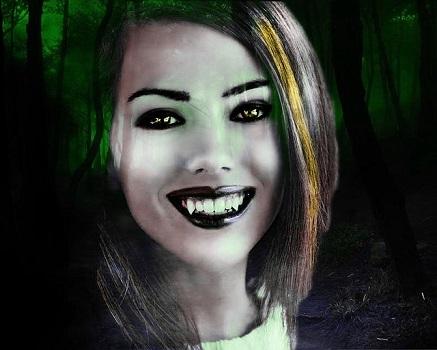
Of course, Dracula employs a distinctively animalistic modus operandi when he attacks women and converts them into vampires – he bites their throats and leaves “two little red points like pin-pricks” (8). This bestial method of conversion also connotes sexuality, which epitomizes the British fear of immigrants assimilating into Britain and consorting with British women who ultimately turn into lewd, uncivilized and uncontrolled creatures like the perception of the foreigner.
The text illustrates the unmistakable juxtaposition between the ideal of the pure and chaste Victorian woman – as exemplified by Mina and Lucy before her transformation – versus the rampant and promiscuous woman targeted by the foreign Dracula – as exemplified by Dracula’s converted female creatures, including Lucy after her transformation. Mina and Lucy embody the model of the desirable Victorian women, even at the expense of their character; they are both courteous, deferential, compliant, virginal and essentially characterless to the point that they are also utterly interchangeable. In fact, it is difficult to find just one singular attribute that can be ascribed to either Mina or Lucy, which can also individualize and distinguish them as unique, multilayered characters. Mina is an assistant schoolmistress who shapes and reshapes her entire life around her fiancée as she declares that after their marriage, she intends “to be useful to Jonathan” (5); she never expresses her desires or impulses, and at times it seems that she lacks any sexuality whatsoever. In comparison, Lucy seemingly begins the narrative from a wholly different position: she is single and being courted by three different mannerly men about whom she deliberates. Yet, even when she is confounded and asks, “Why can’t they let a girl marry three men,” she immediately backpedals and calls it “heresy,” adding that she “must not say it” (5) – ultimately maintaining the paradigm of the virtuous Victorian woman.
Unlike Mina and Lucy, the first time that Dracula’s three transformed female vampires appear in the text, they are almost instantly sexualized and portrayed as immorally profligate. They are depicted with voluptuous lips that elicit in the lethargic Jonathan Harker “wicked, burning desire” whilst one of them wantonly proclaims to another that “[h]e is young and strong; there are kisses for us all” (3). Lucy also starts to resemble these three female vampires after Dracula transforms her, to which Dr. Seward refers as a “strange change.” Right before she dies, Lucy asks Arthur Holmwood “in a soft, voluptuous voice” to kiss her, which is only prevented due to an intervention of Van Helsing (12). After the group encounters the transformed Lucy in her tomb and before they kill her for good, Dr. Seward notes that her appearance is “like a devilish mockery of Lucy’s sweet purity” (16), indicating she is now fully altered from the pure Victorian woman to a licentious, malevolent vampire. If so, the cautionary message is quite clear – an intimate connection with the foreigner will result in a lecherous and depraved alteration, very atypical of the worthy civilized Victorian woman.
Bram Stoker’s Dracula is one of the most famous Gothic novels in history and, in all likelihood, the one that propelled the entire vampire subgenre, from which multitudinous various narratives were developed over the decades since its inception. But the novel’s chief points of recognition today are very different from the actual subtext and layered connotations that are integrated within the text. Dracula conveys rooted fears of 19th-century British society about immigrants and assimilation of immigrants within Britain and the subsequent corruption of British citizens due to interracial copulation of the foreigners with British women.
Count Dracula represents the unwelcome primitive immigrant who invades the country and converts the civilized Victorian women – represented by Mina and Lucy – into unprincipled debauchees. Stoker thus presents in Dracula the great threat that he views in alien newcomers who pour into British territories and might commingle with the local British population, especially women. One has to wonder whether or not Stoker would have been pleased to see how his novel was eventually remembered and if he thereupon would have chosen another message to express his ideas. For instance, to suggest building a wall around Britain and making Transylvania pay for it.
Works Cited
George, Mary Dorothy. 1965. London Life in the 18th century. Vol. 258, p. 62.
Lysack, Krista. 2008. Come Buy, Come Buy: Shopping and the Culture of Consumption in Victorian Women’s Writing, pp. 32-3.
Pellew, Jill. 1989. “The Home Office and the Aliens Act, 1905” from The Historical Journal Vol. 32, No. 2, pp. 369-385.
Silbiger, Steve. 2000. The Jewish Phenomenon: Seven Keys to the Enduring Wealth of a People, p. 13.
Walvin, James. 1984. Passage to Britain: Immigration in British History and Politics, p. 62.
